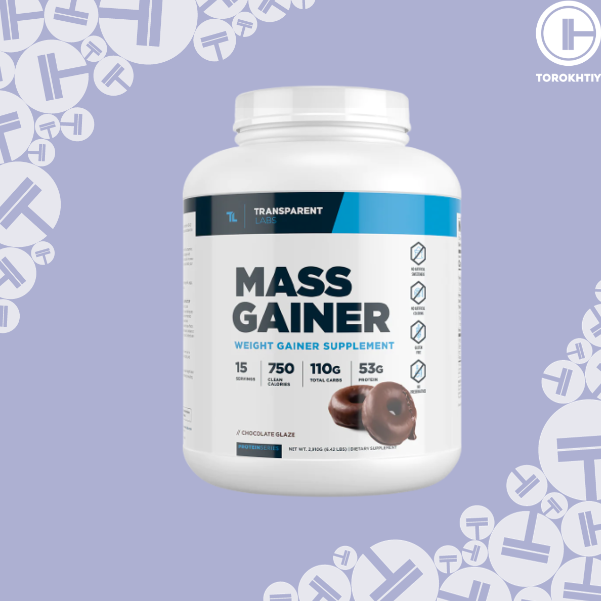How to Use Mass Gainer in a Smart Way?
From this article you will learn how to use mass gainer in such a way that it contributes to gaining muscle mass with minimal fat gain. You will also learn the difference between different types of this supplement and get practical recommendations on how much mass gainer should you take depending on your goals, genetics, training experience and body composition. Let’s dive into the article!
How to use mass gainer depends on your daily calorie and carbohydrate needs, as well as on the specific product you have chosen. How often should you take mass gainer depends on how exactly you organized your meal plan. Read the article to the end for important tips.

What Are Mass Gainers Used for and What Are Their Options?
This type of supplement contains a mix of carbohydrates, protein and fat. Unlike protein powder, which may have zero to low carbs and/or fat, a gainer contains a large portion of carbohydrates and usually moderate fat.
Since gainers are actively used during the period of weight gain, in this article the use of this supplement is primarily considered specifically in the context of muscle gain.
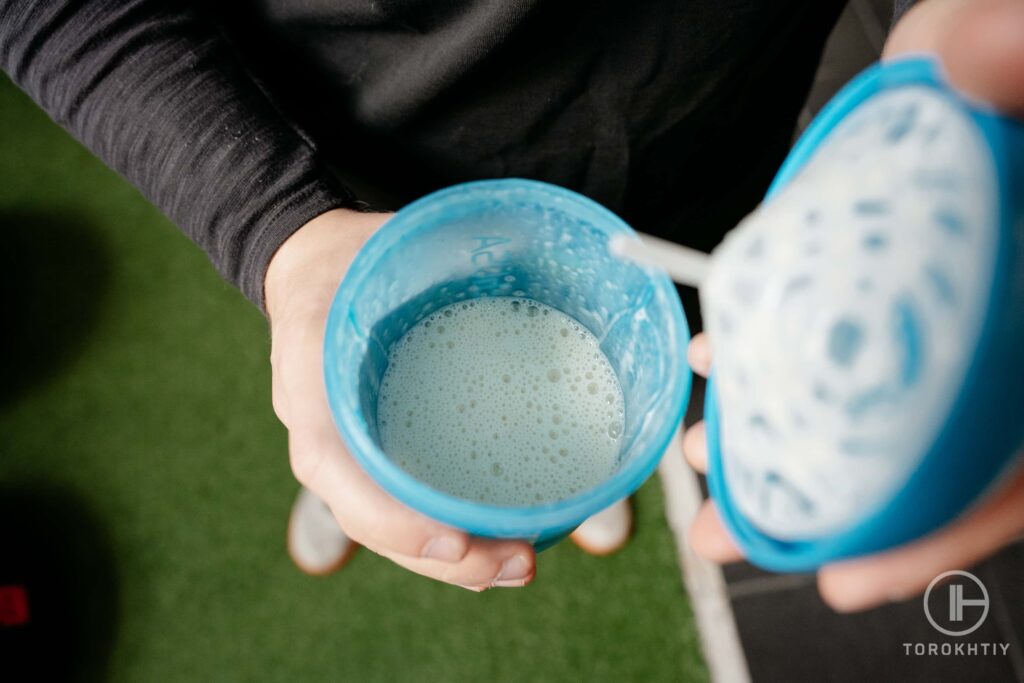
In general, this supplement is used in the following situations:
- If your caloric needs are very high and you can’t meet them from whole foods alone (even if you eat big),
- When a very large amount of carbohydrates is needed,
- When you have a very poor appetite and want to replace one meal with a supplement that contains a mix of carbs, protein and fats.
Understanding the distribution of macronutrients in a specific product helps to understand how to use mass gainer. Usually, one serving of gainer contains 45-55 g of protein (and there are supplements that contain more). However, my advice for most is to reduce the portion size of the gainer so that it contains ~25-40 g of protein. In this way, we can standardize the gainer serving to get this amount of protein per meal. Along with this, the number of carbohydrates and the calorie content of the portion will decrease, but the package will last longer.
The fact is that if you want to maximize resistance training-induced muscle gains, it is recommended to get ~0.4-0.55 g of protein per 1 kg of body weight per meal. If you do the math, you’ll see that a ~25-40 g serving is a reasonable range that falls within these guidelines. The lower range is better for women and men with a low body weight (including underweight), and the higher range is better for men with an average (i.e. 70-80 kg) or relatively heavy body weight (i.e. 80 kg and above).
As for the amount of carbohydrates and their ratio with protein, this component can be different and depends on the specific product you are considering. In fact, the ratio of carbohydrates to protein and the amount of carbohydrates per serving should be given special attention when choosing a supplement that will best suit your particular situation. Taking into account this ratio will also help to get an answer to the question “How many scoops of mass gainer to use”.
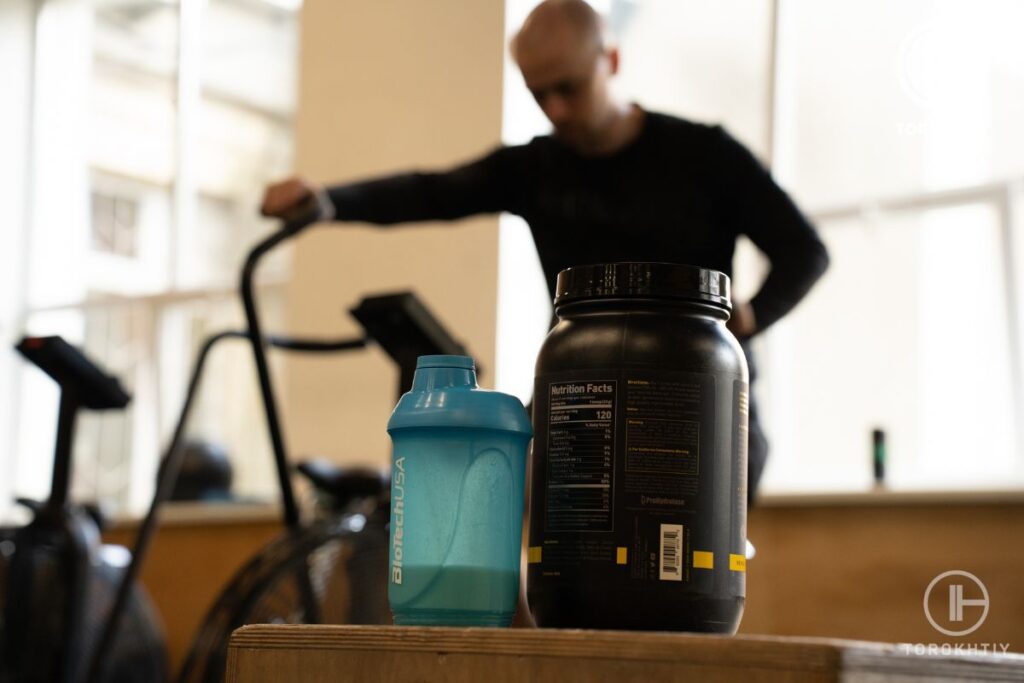
There are gainers with a high ratio of carbohydrates to protein. I mean 6:1, 5:1 or 4:1, which means that for every gram of protein there are 6, 5 and 4 grams of carbohydrates, respectively. Usually, such gainers have a very high calorie content of one serving.
On the other hand, there are also options on the market with a moderate to low ratio of carbohydrates to protein per serving – 3:1, 2:1 and even 1.5:1 and lower. Such products are generally a more optimal choice for lean bulk, although a supplement with a high carb-to-protein ratio can also be helpful, especially for those who have the most trouble gaining weight.
As for fats, there can be a moderate amount per serving, or a large amount (~5-10 g or ~15-18 g, respectively).
How to Use Mass Gainer the Smart Way?
Below I will list the main recommendations and tips that will help you use this type of supplement in the best way.
1. Consider the Gainer Only as an Auxiliary Supplement
Think of the mass gainer as a “backup” supplement. Remember that the vast majority of your carbohydrates, protein and fat should come from whole foods.
If you don’t face big problems when planning your diet, especially when it comes to getting the required amount of carbohydrates from whole foods, then you can use the mass gainer only as an auxiliary source of carbohydrates and protein. Especially on days when the appetite is the worst or when there is no time to prepare a complete mixed meal. Therefore, how often should you take mass gainer really depends on whether you have a meal plan and how often it needs help from a gainer.
My point is that if you purchase this supplement, it doesn’t mean you have to use it every day. For example, you can use it every other day, or 2-3 times a week. In this way, you will also stretch the package for longer.
Remember that whole grains and fruits are the best sources of carbohydrates. Whole carbohydrate-rich foods also contain plenty of vitamins, minerals and dietary fiber, and are naturally very low in sodium (whereas a serving of a gainer can be very high in sodium).
The most common advice I give my clients to meet their high daily carb needs is to regularly eat oats, pasta, whole wheat bread (look for lower sodium options), brown rice and fruits, including dried fruits with no added sugar. And you can combine the above products to get 100g or more of carbs per meal!
2. Use the Gainer in the Context of a Diet With a Small to Moderate Calorie Surplus
If you want to optimize muscle mass gain as much as possible, then you need to follow a concept that can be expressed in three key components:
Strength training with progressive overload + Small to moderate energy surplus + Sufficient protein.
It is important not to overdo it with the magnitude of energy surplus. Since the gainer is a high-calorie supplement, it is easy to go beyond the reasonable limits of excess calories with it, which increases the risk of gaining too much fat. And this is one of the key reasons why I most often recommend choosing a mass gainer with a low to moderate carb to protein ratio.
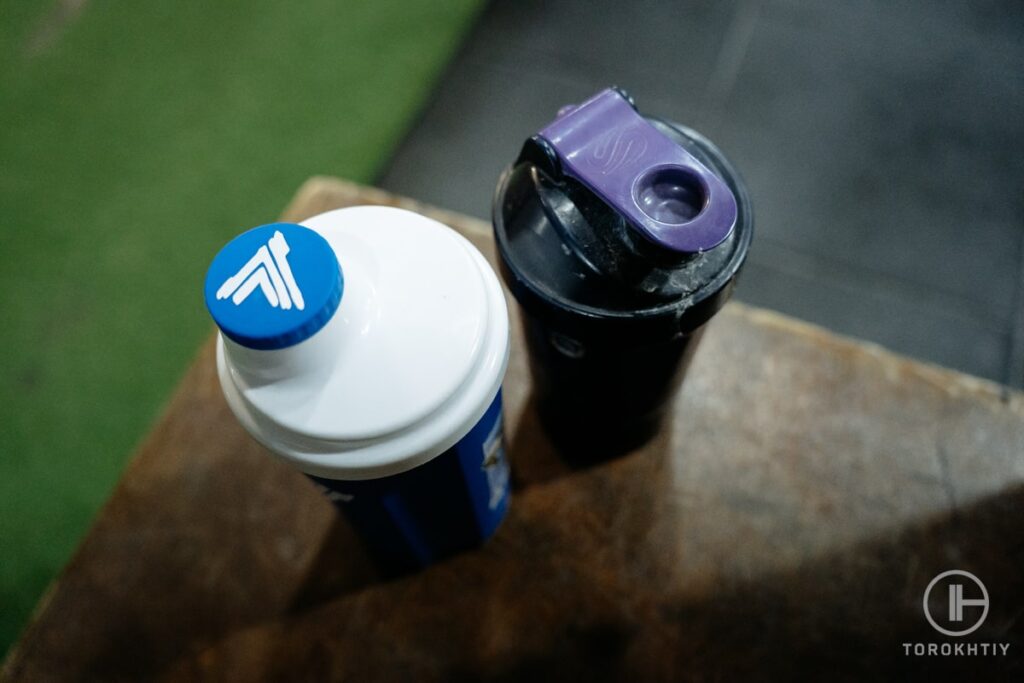
To gain lean muscle mass while minimizing fat gain, it is better to follow a low-to-moderate calorie surplus diet plan. The magnitude of the calorie surplus is mainly dictated by training experience, as well as genetics and other factors such as sleep, stress etc. In general, it is better to adhere to a caloric intake that exceeds the needs for maintaining body weight by ~10-20%. For example, if the online formula calculated the need for 2300 kcal to maintain weight, then adding another ~230-460 kcal (corresponding to 10-20%) may be the optimal starting point.
Untrained or beginners in strength training should stay closer to the upper range (and may even be more aggressive with calorie surplus, especially in the initial stages of their training journey), while experienced trainees (and especially those who have approached their “ceiling” for the growth of muscle mass) should stick to the lower range.
So the general concept is as follows: the more experienced a trainee you are, the slower the pace of weight gain should be to minimize the gain of fat mass. For the most advanced trainees, the optimal calorie surplus can be only ~5%, especially if substantial increases in fat mass are experienced.
Such an approach with a small-to-moderate calorie surplus will optimize the distribution of gaining muscle mass to fat mass (i.e., more muscle, less fat). In any case, after calculating the initial calorie needs, you will need to make adjustments according to the dynamics of body composition and body weight changes.
3. Do Not Overdo It With the Serving Size
I said earlier that we can standardize a portion of a gainer by tying it to the amount of protein. As a guideline, you can use ~25-40 g of protein per serving.
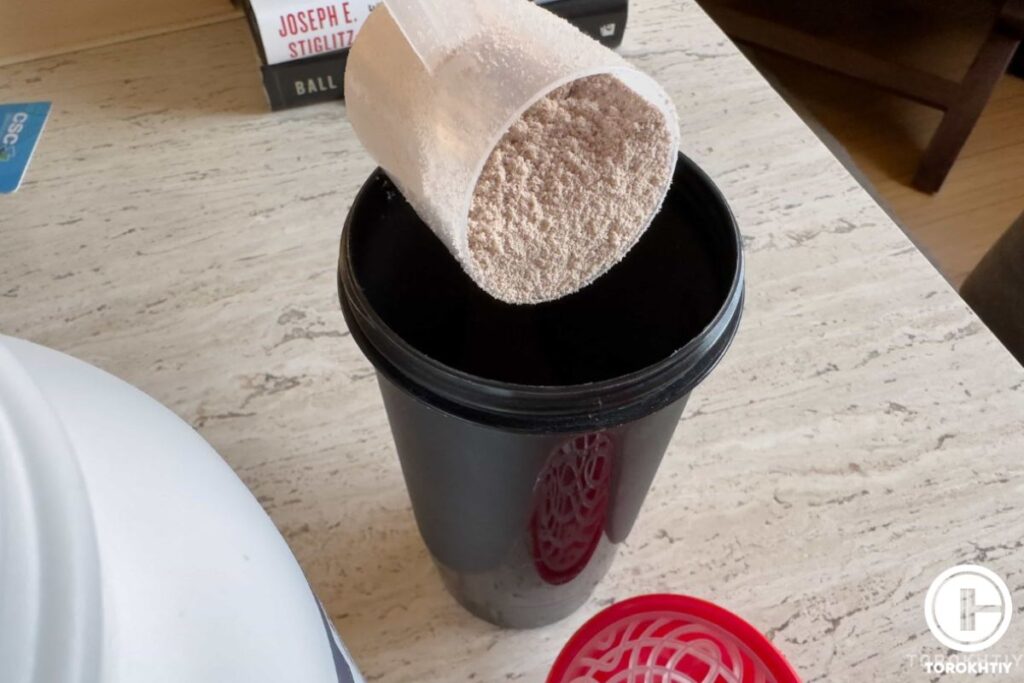
This means that we can ignore the manufacturer’s recommendations for the specified serving. In any case, the decisive nutritional factor for gaining muscle mass is the total caloric content of your diet (as well as overall amount of protein), not whether you consume exactly the serving of mass gainer that is indicated by the manufacturer.
4. Monitor the Rate of Weight Gain and Adjust Caloric Intake Accordingly
Once you’ve put together a well-designed meal plan, with a low-to-moderate calorie surplus and enough protein, tracking changes and making adjustments is one of the most important things in the whole process!
To minimize the increase in fat mass, the following recommendations are provided regarding the rate of weight gain:
- Novice / Intermediate ~0.25-0.5% of body weight per week,
- Advanced trainees ~0.25% of body weight per week.
If the rate of weekly weight gain is significantly higher and/or you notice a significant increase in body fat percentage, you may need to cut calories from carbohydrates and/or fats. For example, subtract 100 kcal and continue to monitor the dynamics of changes.
In order to monitor the weekly rate of weight gain, it is best to weigh yourself every day or every other day. Calculate your average weekly weight and compare it to your average weekly weight from the previous week. In this way, you will be able to avoid the impact of very sharp weight fluctuations on individual days.
Avoid dirty bulking, don’t chase the fastest mass gain! However, keep in mind that the above guidelines are not set in stone, as there is considerable individual variability in response to exercise and magnitude of caloric surplus. In fact, those who won the genetic lottery can gain muscle mass at a faster rate than indicated above.
And yes, life is unfair, but we have to accept our genetic makeup and do the best we can.
By the way, if you are wondering what “enough protein for muscle gain” means, then it is 1.6 g per 1 kg of body weight. However, if you want to maximize resistance training-induced gains in muscle mass, you can eat up to ~2.2 g/kg/day.
When to Take Mass Gainer?
Because this type of supplement is high in carbohydrates and protein, the best time to take it may be in the window around an intense training session (pre- or post-workout). You can also consume a reduced serving with breakfast, which lacks protein and carbohydrates.
When and how to take mass gainer can also be dictated by your gastrointestinal tolerance. For example, if its use pre- or after a workout causes unpleasant symptoms, then it is better to find another time during the day for this supplement (e.g. book this supplement for breakfast). You can also reduce the portion size and experiment with the combinations of foods with which you take this supplement for breakfast.
If you want a specific product recommendation, check out MASS GAINER by Transparent Labs. It is a moderate carb to protein product, with Informed Choice certification. I recommend going with the Sweet Vanilla flavor because it has less saturated fat and sodium.
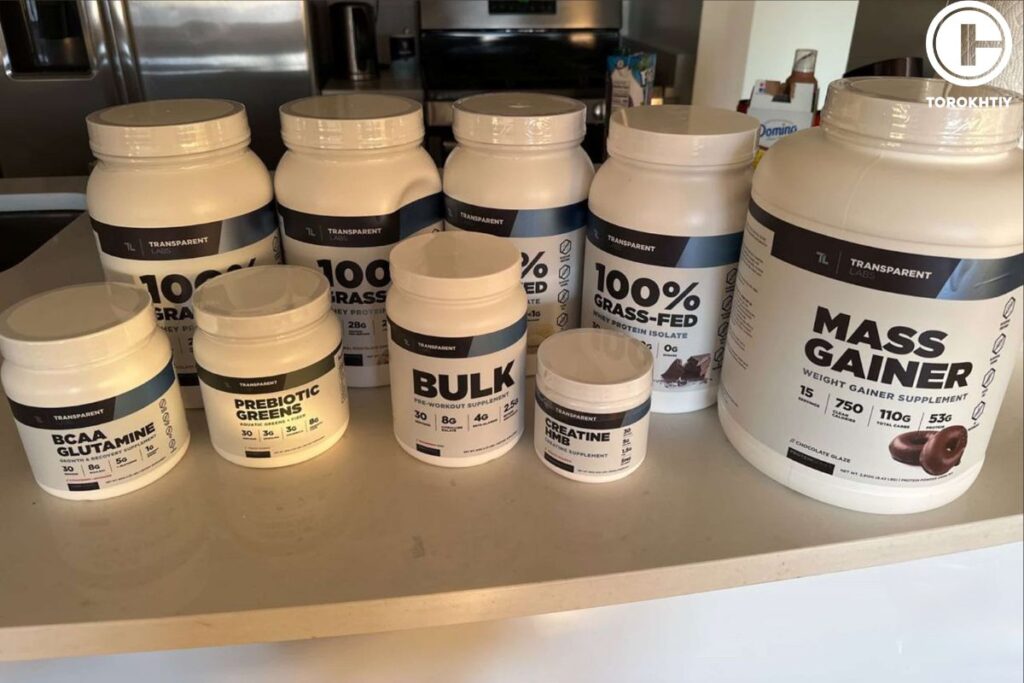
This product also contains creatine monohydrate which is a very nice bonus. However, keep in mind that the required total daily dosage of creatine is 3-5 g.
FAQ
How Much Mass Gainer Should I Take in a Day?
First, you must have a well-planned meal plan to which you can add a gainer. How much mass gainer should you take primarily depends on your needs in calories and carbohydrates. For example, if the caloric needs are 2800-3000 kcal, you can limit yourself to one serving. If your needs are 3500 kcal and above, you may need 1.5 or even 2 servings.
How many scoops of mass gainer also depends on the specific product, that is, how many carbs, protein and fat per serving it contains.
Should I Take Mass Gainer Everyday?
It depends on how you organize your diet. You can use a gainer every other day or twice a week if you are able to get the needed amount of carbohydrates from whole foods. On the other hand, if you suffer from the need to consume a lot of carbohydrates and calories from whole foods, then you can use a gainer every day.
Is Mass Gainer Good for Skinny Guys?
Yes, because skinny guys have the most problems in terms of gaining the necessary number of calories and carbohydrates. If a skinny guy says he eats a lot, but still can’t gain weight, a gainer can be a very useful supplement. In this situation, a product with a high carb to protein ratio (eg 5:1) may work best.
Conclusion
A weight gainer can be a very useful addition to a well-planned diet. Especially for those who suffer in attempts to gain muscle mass, but no matter what he does, the weight does not shift. However, in order to use this supplement wisely, you need to consider your calorie and carbohydrate needs, the amount of carbohydrates and protein per serving of the supplement, as well as your training experience, genetics, and other factors.
Have you ever used this supplement and what are your impressions? Tell us in the comments!
Also read:
- Does Mass Gainer Make You Fat
- Can You Do Cardio While Bulking
- Is Oatmeal Good for Bulking
- Is Pasta Good for Bulking
References:
- J. Iraki et al., “Nutrition Recommendations for Bodybuilders in the Off-Season: A Narrative Review”, Sports (Basel). 2019 Jul; 7(7),
- B.J. Schoenfeld, A.A. Aragon, “How much protein can the body use in a single meal for muscle-building? Implications for daily protein distribution”, Journal of the International Society of Sports Nutrition vol. 15, 10 (2018),
- A.A. Aragon, B.J. Schoenfeld, “Magnitude and Composition of the Energy Surplus for Maximizing Muscle Hypertrophy: Implications for Bodybuilding and Physique Athletes”, Strength and Conditioning Journal 42(5):p 79-86, October 2020,
- R.W. Morton, K.T. Murphy et al., “A systematic review, meta-analysis and meta-regression of the effect of protein supplementation on resistance training-induced gains in muscle mass and strength in healthy adults”, Br J Sports Med, 2018 Mar;52(6).
- E.R. Helms, Alyssa-Joy Spence et al., “Effect of Small and Large Energy Surpluses on Strength, Muscle, and Skinfold Thickness in Resistance-Trained Individuals: A Parallel Groups Design”, Sports Med Open. 2023 Dec; 9.
Why Trust Us?
With over 20 years in Olympic Weightlifting, our team does its best to provide the audience with ultimate support and meet the needs and requirements of advanced athletes and professional lifters, as well as people who strive to open new opportunities and develop their physical capabilities with us.
By trusting the recommendations of our certified experts in coaching, nutrition, dietology, and sports training programming, as well as scientific consultants, and physiotherapists, we provide you with thorough, well-considered, and scientifically proven content. All the information given in the articles concerning workout programming, separate exercises, and athletic performance, in general, is based on verified data. We ensure that you can rely on our professionals’ pieces of advice and recommendations that can be treated as personalized ones which will benefit you and fully meet your needs.
The product testing process is described in more detail here
Author: Oleksandr Maksymenko
Certified Sports Nutritionist,
MSc Sports Dietetics
Specializing in: Weight management, Fitness / Sports nutrition
Oleksandr is a professional fitness nutritionist certified by the Fitness Professional Association (FPA). He follows the principles of evidence-based dietetics and fosters a healthy relationship with food in his clients, ensuring there are no strict prohibitions on their favorite foods or frequent lapses. His primary goal is not only to achieve results for you but also to sustain them over the long term, all while enjoying tasty and delicious food.

